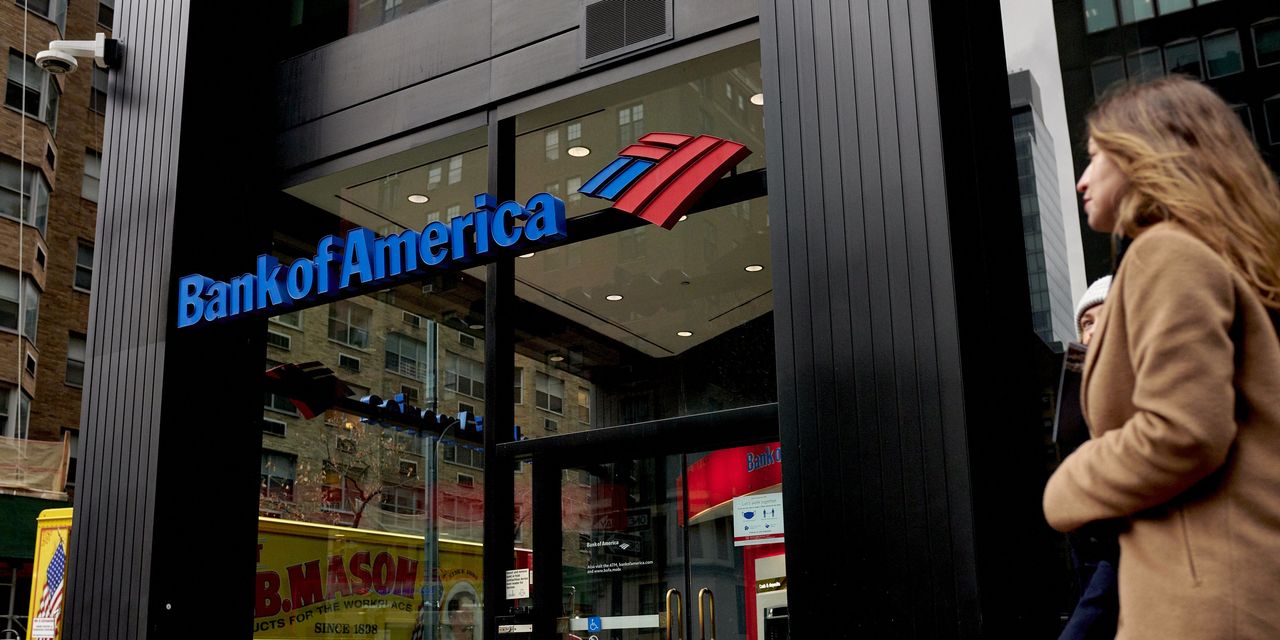
They say you have to spend more money to make more money. But in banking, sometimes you don’t really have to do anything at all.
This earnings season has brought a lot of attention to U.S. banks’ expenses, which is natural in an inflationary environment. But the focus should be on the combination of cost and revenue, or what is known as operating leverage. This refers to the degree to which higher or lower costs drive revenue growth.
Often, big banks are unlike many other businesses in how they can make money from customers: Lending rates, such as those on credit cards, tend to grow a lot faster than their materials costs—funding rates, like on deposits. As a result, banks can earn billions more when interest rates rise without having to do things such as making more sales or hiring more people. For example, Bank of America would expect to see a $6.5 billion benefit to net interest income over 12 months from a 1 percentage point jump in rates across the curve. These numbers are based on models, but they show the scale of benefit.
In the fourth quarter, Bank of America generated positive operating leverage in part by increasingly reinvesting excess cash which, along with some loan growth, helped boost net interest income over the prior year by 11%. Overall, the bank’s net revenue grew 4 percentage points faster than noninterest expenses in the quarter. Meanwhile, the bank said on Wednesday that it expects noninterest expenses in 2022 to be similar to 2021.
Lenders’ Wall Street arms do have a major cost in the form of bankers and traders. Pay on Wall Street is rising, but typically not faster than revenue is growing right now. Morgan Stanley’s compensation and benefits as a percentage of net revenues in its institutional securities business fell from 32% in 2020 to 31% last year, the bank reported on Wednesday.
Meanwhile, investors might not be as focused on investment spending, perhaps thinking it is the good kind of cost. But here is where costs might need a closer look. Higher investment spending can be put toward faster growth in the future but, if it only helps to preserve what banks already have as financial-technology rivals encircle them, then it is really just a higher cost of doing business. The same can be true for investments in compliance systems.
The competitive tech dynamic can influence funding costs, too. Fintechs may be aggressively going after banks’ core checking-account customers, which could lead banks to pay higher deposit rates in some markets. The change in deposit rates relative to rising overall rates is known as deposit beta. After a surge in deposits during the pandemic, banks’ betas might be low, though the pace at which the Federal Reserve tries to drain that cash from the system is a key variable, too.
The beta dynamic could be more important over time than line items such as whether banks’ travel budgets rise in 2022. Investors need to watch expenses, but they shouldn’t conflate different kinds of inflation.
Write to Telis Demos at telis.demos@wsj.com
Copyright ©2022 Dow Jones & Company, Inc. All Rights Reserved. 87990cbe856818d5eddac44c7b1cdeb8
Appeared in the January 20, 2022, print edition as ‘Banks’ Expenses Don’t Have To Be Costly.’








